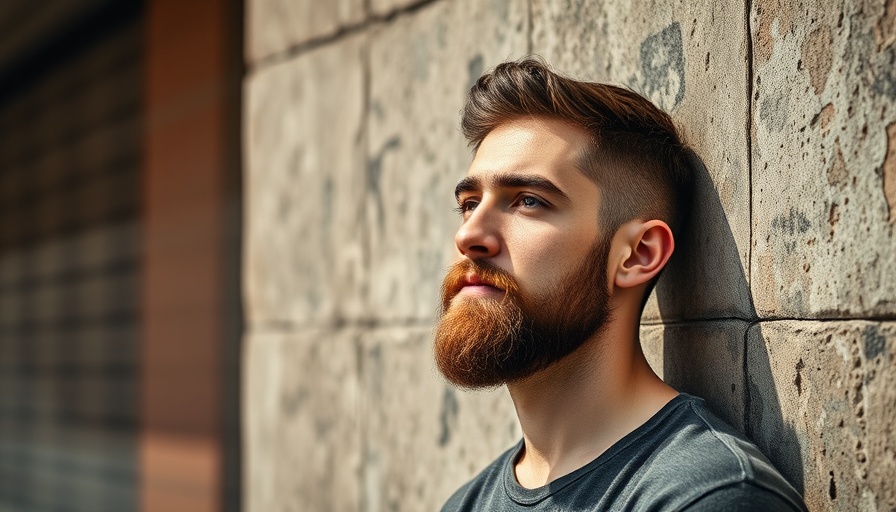
Understanding Eye Bags: A Closer Look at Gender Differences
When we think about eye bags, they often symbolize fatigue or stress. However, recent explorations into ocular health reveal that there are gender-based differences in who is more prone to these cosmetic issues. While both men and women can experience eye bags, men are strikingly more susceptible to this condition. Understanding the underlying reasons can empower our skincare choices, especially for parents looking to set a positive example on self-care for their children.
Why Are Men More Prone to Eye Bags?
Research suggests that the shape of one's face plays a significant role in the appearance of eye bags. Men typically have stronger facial muscles and a different skin texture compared to women, which can make the signs of aging, including sagging skin around the eyes, appear sooner and more prominently. This physiological difference can lead to an earlier onset of eye bags for men.
The Role of Hormones in Eye Health
Hormones are important players in the maintenance of skin health, and their effects differ significantly between genders. Specifically, testosterone in men affects their skin's thickness and elasticity, while women benefit from estrogen's potential protective qualities against skin aging. This disparity can explain why women might have a more resilient skin barrier that can delay the appearance of eye bags.
The Impact of Lifestyle Choices
Our day-to-day habits considerably influence our skin's health. Factors such as diet, sleep patterns, hydration, and stress management are integral not just for looking good but also for feeling good. As parents, fostering healthy lifestyle habits—like a balanced diet rich in antioxidants, consistent hydration, and promoting mindfulness through yoga and stress reduction techniques—can ultimately serve to mitigate the formation of eye bags for both ourselves and our children.
Social Connection and Perceptions of Beauty
Beyond physiology, the societal beauty standards imposed upon men and women can also affect how we view eye bags. For instance, while sagging skin may be seen as a sign of wisdom in men, women often face societal pressure to maintain a youthful appearance, leading to an increased focus on eye care. This can result in differing attitudes toward skincare routines, highlighting the importance of self-acceptance and the role imagery plays in our understanding of beauty.
Actionable Insights: Steps to Care for Your Eyes
Awareness is the first step to prevention. Here are some practical tips for maintaining eye health:
- Hydrate Adequately: Drinking plenty of water throughout the day helps maintain skin elasticity.
- Healthy Eating Habits: Incorporate foods rich in vitamins C and E that help promote skin health.
- Regular Sleep Patterns: Aim for 7-8 hours of quality sleep. Establishing routines that prioritize rest can lessen the appearance of fatigue.
- Mindfulness and Stress Management: Integrate mindfulness practices into daily routines to counter stress and its physical manifestations like eye bags.
- Routine Eye Care: Regular eye check-ups can help catch any underlying concerns before they manifest visibly.
Reaching out for Help: Professional Treatments
In some cases, lifestyle changes may not be sufficient to address eye bags. Consulting with healthcare professionals who specialize in aesthetics can provide alternative solutions, from topical creams to procedural interventions. As a family, discussing these options can help normalize seeking help for what often feels like purely cosmetic concerns.
Conclusion: Be a Role Model for Healthy Living
Ultimately, understanding why eye bags form differently for men and women not only equips us with knowledge but can also foster healthier lifestyle choices. As parents, encouraging an open conversation about eye care and beauty standards can empower children to embrace their individuality while striving for emotional and physical health. Remember, looking good starts with feeling good, and our choices matter.
 Add Row
Add Row  Add
Add 




 Add Row
Add Row  Add
Add
Write A Comment